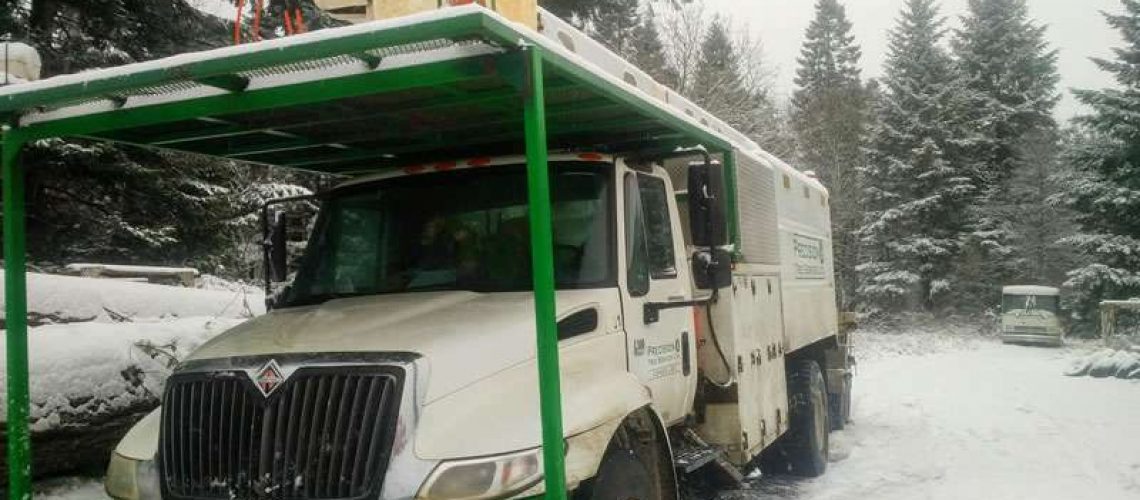A “Good Catch” is a safety near miss or a close call – any unplanned event or unseen hazard that does not result in an injury, illness or damage but, had the potential to do so. We have decided to start a series posting Good Catches to our page to help others recognize and deal with situations that may lead to injury, illness or damage BEFORE it can happen.
Winter weather conditions prevented tree work from being done safely and the crew was shut down for the day. A CUA came into work to take care of some maintenance and prepare the equipment for the next working day.
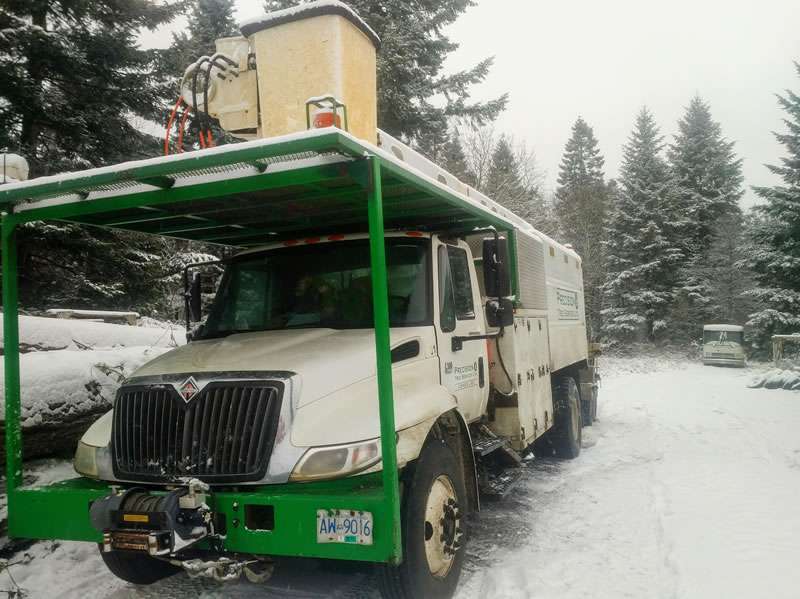
During normal maintenance the CUA decided to use the opportunity to take the unit to the mechanic shop to replace auto feed sensor in the chipper. The CUA completed the pre-trip inspection of the truck and chipper unit and was ready to hit the road. At the last minute, he noticed the snow loaded up on top of the truck.
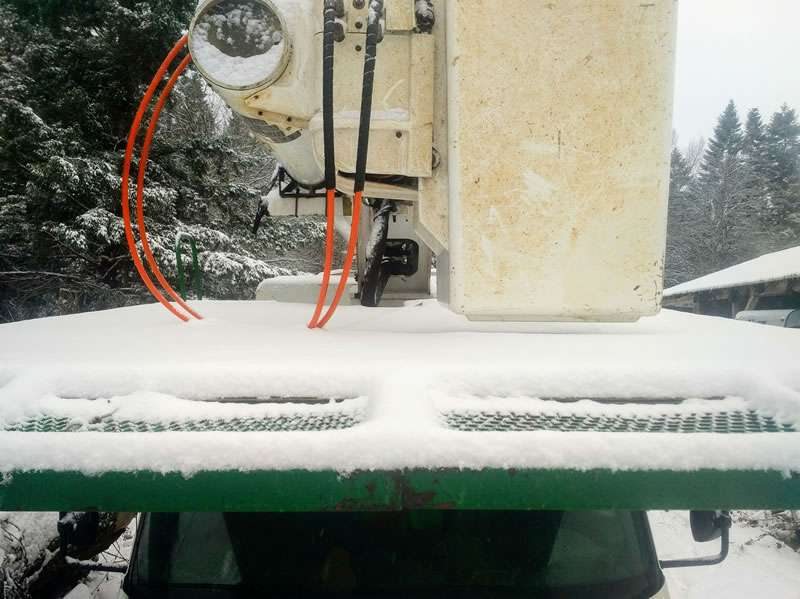
Driving any vehicle with snow accumulated on top is extremely dangerous. Light snow can blow off while driving causing a virtual white out for other drivers. Hard pack snow or ice fall off of a vehicle and become a projectile for other road users. Noticing the snow on top of the truck and clearing it before hitting the road was a GOOD CATCH.
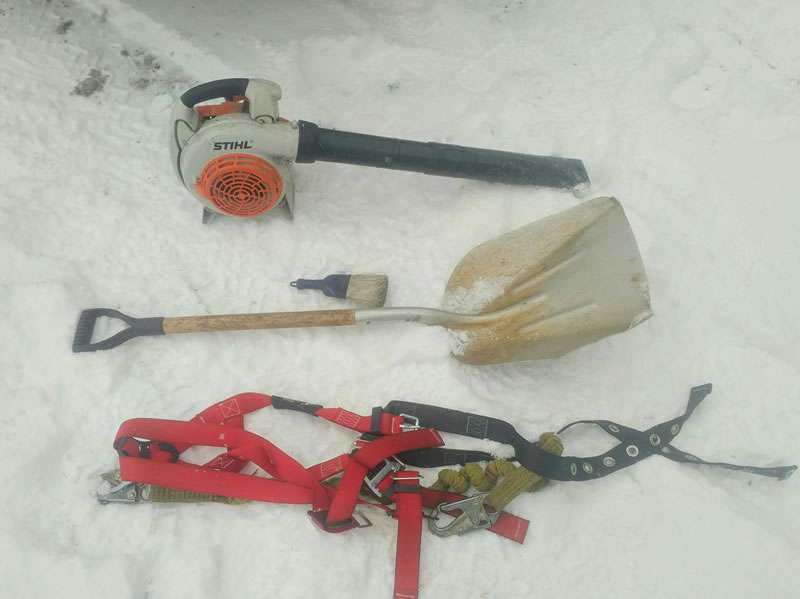
Clearing snow and ice off of the top of a commercial vehicle like a bucket truck can be a dangerous job in itself. Here are some of the tools used to get the job done safely:
- Leaf blower: Doubles as a snow blower in light snow conditions and is by far the most efficient and safe way to clear snow, make sure to wear the proper PPE for using a power tool like the leaf blower
- Non-metallic broom or brush: To clear off the boom in wet/heavy snow conditions
- Aluminum shovel or push broom: Works to clear deeper snow off the top of the chip box and headache rack
- Harness: Stay safe, if it’s snowy and cold, conditions on top of the commercial vehicle will be slippery; wear a harness and clip in when working at heights
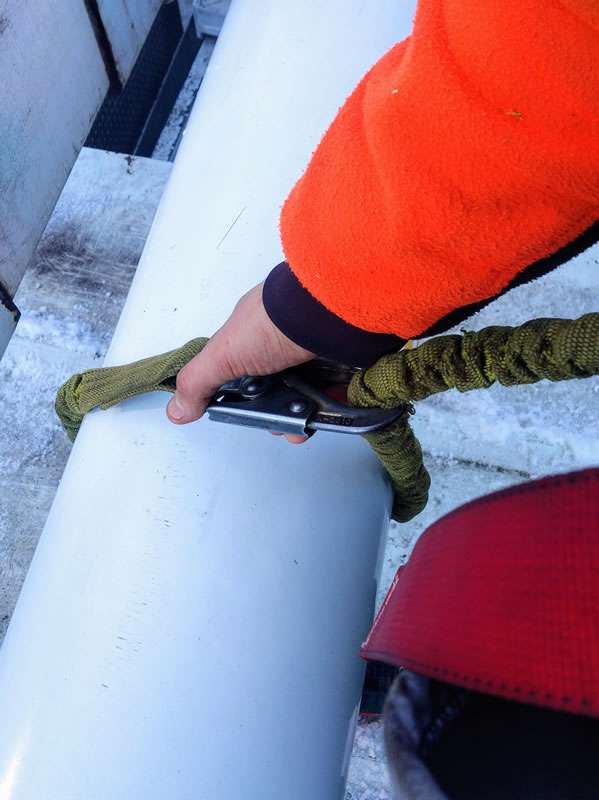
Here’s a good way to clip in while working your way down the boom, past the fixed tie in point at the bucket. Make sure to keep the metal up when travelling down the boom. Move carefully, and use extreme caution.
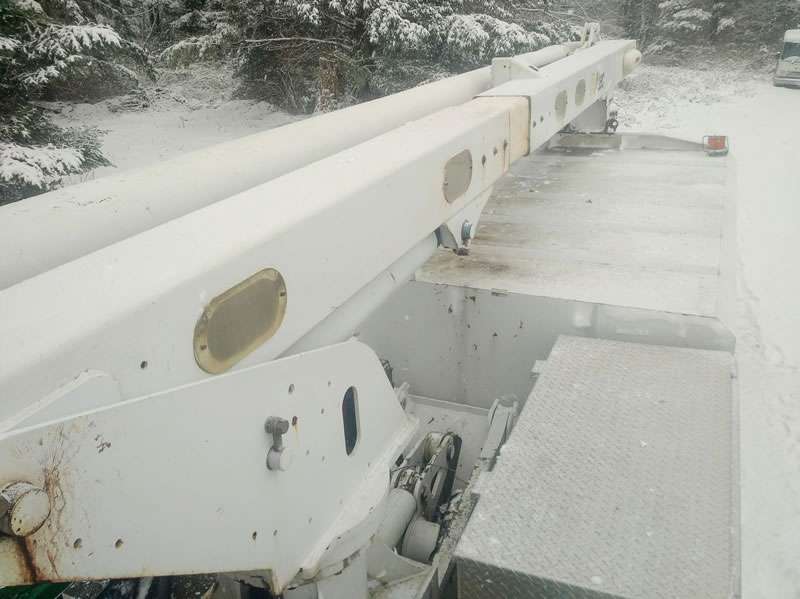
A safe, clean truck, ready for the road.
A productive and safe workday starts well before the first branch has been cut. A thorough pre-trip of all mobile equipment must take place prior to operating it. For a comprehensive review of pre-trip requirements for commercial vehicles, please see Chapter 10 (page 195) of ICBC’s “Driving Commercial Vehicles”.

